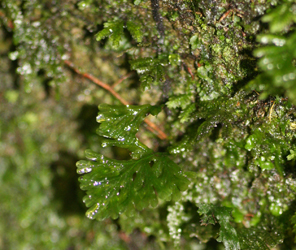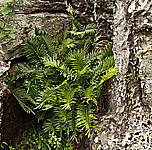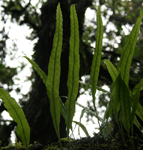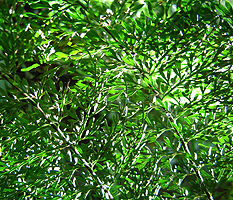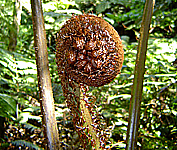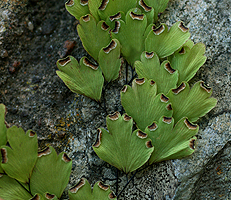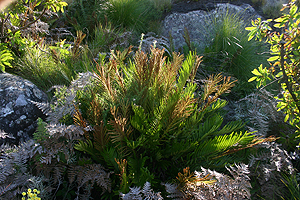Vegetative structure
1. Rhizome
The stem or rhizome is the part of a fern from which the fronds (leaves) and roots grow.
The primary roots (growing directly from the embryo) take care of the initial anchoring and uptake of water & nutrients for the young fern. They are replaced by secondary adventitious roots responsible for anchoring and further uptake of water and nutrients. The secondary roots grow continuously with the stem.
The rhizomes can be very variable: from short & thick to long creeping & wiry, from differently branched to unbranched. It can be hidden underground as is often the case with terrestrial ferns, or it may lay clearly visible on top of the soil or trees as it often does with epiphytic or lithophytic ferns.
The rhizomes carry the growing point of the fern. If the rhizome is creeping, the growing point sits at the end. The fronds arise at different space intervals along the rhizome. Erect rhizomes have their growing point in the centre at the apex, the fronds grow in one tuft.
If an underground rhizome emerges above the ground and forms a woody trunk - like stem, we call this a caudex . Treeferns are well known examples of ferns that posses a caudex. Apart from tree ferns there are other larger fern species that also develop a caudex with age (Blotiella spp., Marattia fraxinea)
2. Fronds
The fronds are the leaves of a fern, consisting out of 2 parts: the stipe and the lamina.
The part between the rhizome and the first leaflet is called stipe, it is analogous to the petiole of a leaf.
The lamina is the blade of the fern, it is usually green and responsible for the photosynthesis. The lamina consist of a midrib (rachis) and of pinnae.
A pinnae is the first division of the front, this can be further divided into pinnules.
Photos©P. Ballings & B. Wursten
Fronds are very variable. They can be minute to extremely large. If the frond is undivided it is called simple, once divide pinnate, twice divided bi-pinnate, and so on to quadripinnate. If the divisions are not complete they are called pinnatifid.
An easy way to recognize a fern is the rolled up state of the young leaves (fiddleheads or croziers), a condition better known as circinate vernation.
Photos©P. Ballings & B. Wursten
Fronds can be sterile or fertile. In monomorphic ferns the sterile & fertile fronds have the same shape; in dimorphic species the sori are located on a differently shaped fertile frond. The genera Anemia, Osmunda, Blechnum and Schizaea are well known examples of dimorphic ferns.


